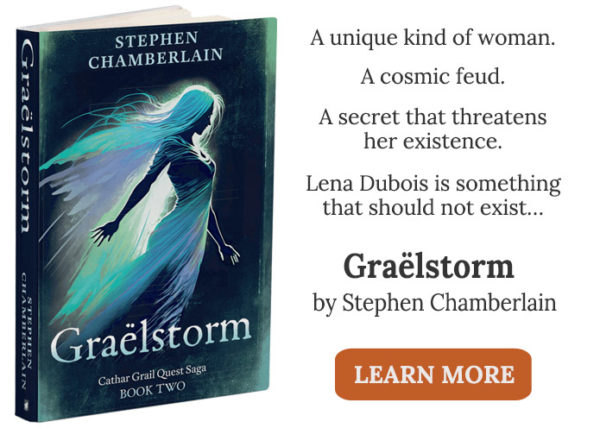“If you want your children to be intelligent, read them fairy tales. If you want them to be more intelligent, read them more fairy tales.” — Albert Einstein
When winter set in, I decided to compile all the bedtime stories I’d created for my granddaughter over the years. It started when she was three, inspired by her love of role-playing and make-believe. Back then, the stories were short—about 750 words—and often improvised on the spot. But as she has grown, so have the stories. The plots are more complex, the characters layered, and the narratives longer.
Magic of Wonder
Toddlers see the world as a place where everything revolves around them, and that perspective shaped my earliest stories. I placed my granddaughter at the centre, with narratives inspired by her family, toddler adventures, and her growing curiosity.
At that age, imagination runs wild. Toddlers are learning how the world works, and everything around them feels magical and full of wonder. Fairies and unicorns seem as real as anything else, and possibilities feel endless. Their curiosity leads to constant questions, and when answers aren’t clear, their imagination fills the gaps.
My initial stories embraced this mindset, blending fairy-tale elements with everyday moments. From wondering why frogs croak in our garden pond to asking why Grandad has “not so much hair as me,” why he hates butter, or where mangos come from, each story reflected her expanding awareness and sense of wonder.
These early tales also explored common challenges toddlers face, like understanding rules and managing frustrations. Themes like resisting bedtime, handling tantrums, and misplacing favourite toys made the stories relatable. To engage her attention, I added magical characters, such as the Pinching Fairy, the Sleep Fairy, and the mysterious Mango Beast. By mingling mundane settings with touches of magic, the stories connect reality with the boundless realms of a child’s creativity.
Laugh and Learn
As my granddaughter’s vocabulary and thinking skills developed, the focus of my bedtime stories shifted to “young Grandad” as the central character. Drawing inspiration from my childhood growing up in West Yorkshire, I reimagined familiar neighbourhood features—woods, valley, streams, and landmarks—into an enchanted landscape filled with witches, pixies, fairies, and dwarves. My world building was influenced by Rupert Bear’s Nutwood, an idyllic setting illustrated by Mary Tourtel and Alfred Bestall, where the ordinary and magical seamlessly coexist.
These stories also added a touch of humour, often drawing on the exaggerated hardships and local pride of northern life. Tales like Grandad and the Hardening and Grandad and the Great Yorkshire Freeze delivered laughs while subtly teaching values important in life. Whether the themes explored kindness, sharing, or caution with strangers, humour wasn’t just a way to entertain. It allowed these messages to come through without sounding preachy.
Power of Pictures
Illustrations are a vital part of bedtime stories for kids. They make the narrative more vivid and aid comprehension. I quickly learned that without pictures, even the most well-written story can feel flat for a toddler.
Since I’m not an illustrator, I had to get creative to add that visual spark. For the title pages, I used the Draw function in Microsoft Word to hand-draw simple stick-figure cartoon sketches. These playful drawings capture the essence of each story and give a sneak peek of the adventure ahead. It’s a fun way to set the mood and capture a child’s attention before the story even starts.
As the stories grew more complex, I turned to AI-generated images. Using AI allowed me to create visuals that matched the magical worlds I was building in my imagination—whether it was a mysterious forest or a tunnel through the snow. Seeing how these images added depth and atmosphere to the stories proved just how important pictures are for making a story resonate with kids. Illustrations aren’t just decoration; they’re a crucial part of storytelling for young minds, helping them connect with the story in a way words alone can’t achieve.
Mystery and Adventure
Now my granddaughter has started school, her imagination has blossomed, and my stories have evolved to keep pace with her growing curiosity. The reimagined village of my childhood remains the backdrop, serving as a gateway to magical encounters and thrilling escapades. However, these recent stories are full of mystery, adventure, and a lively cast of characters. There’s the mischievous troublemaker, the clever and adventurous problem solver, and the bossy know-it-all whose schemes often backfire. Each has their quirks and personalities that keep the narratives fresh and interesting. While higher stakes add excitement, the tone is always light and fun. Instead of spelling out morals, these stories show values like friendship, courage, honesty, and problem-solving in a way that’s both entertaining and meaningful.
The Joy of Storytelling
Bedtime stories are more than just a way to wind down the day—they awaken creativity, nurture young minds, and instill values that can last a lifetime. Whether it’s a whimsical fairy tale or a thrilling mystery, the aim is to create a world that children want to revisit again and again. For anyone considering writing for kids, bedtime stories offer the perfect starting point—an opportunity to inspire, connect, and spark wonder.



